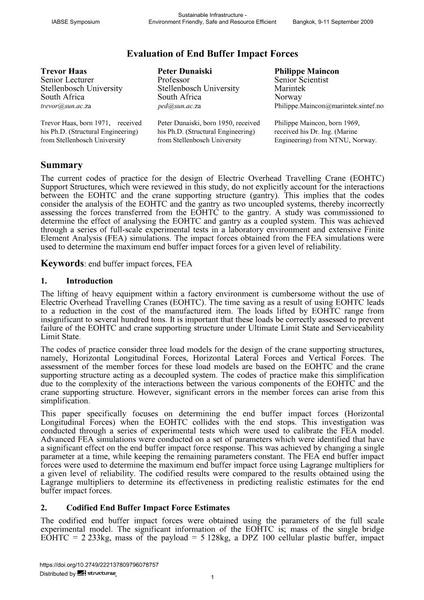Evaluation of End Buffer Impact Forces

|
|
|||||||||||
Bibliografische Angaben
| Autor(en): |
Trevor Haas
Peter Dunaiski Philippe Mainçon |
||||
|---|---|---|---|---|---|
| Medium: | Tagungsbeitrag | ||||
| Sprache(n): | Englisch | ||||
| Tagung: | IABSE Symposium: Sustainable Infrastructure - Environment Friendly, Safe and Resource Efficient, Bangkok, Thailand, 9-11 September 2009 | ||||
| Veröffentlicht in: | IABSE Symposium Bangkok 2009 | ||||
|
|||||
| Seite(n): | 28-37 | ||||
| Anzahl der Seiten (im PDF): | 8 | ||||
| Jahr: | 2009 | ||||
| DOI: | 10.2749/222137809796078757 | ||||
| Abstrakt: |
The current codes of practice for the design of Electric Overhead Travelling Crane (EOHTC) Support Structures, which were reviewed in this study, do not explicitly account for the interactions between the EOHTC and the crane supporting structure (gantry). This implies that the codes consider the analysis of the EOHTC and the gantry as two uncoupled systems, thereby incorrectly assessing the forces transferred from the EOHTC to the gantry. A study was commissioned to determine the effect of analysing the EOHTC and gantry as a coupled system. This was achieved through a series of full-scale experimental tests in a laboratory environment and extensive Finite Element Analysis (FEA) simulations. The impact forces obtained from the FEA simulations were used to determine the maximum end buffer impact forces for a given level of reliability. |
||||
